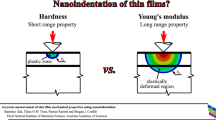Abstract
In this paper a silicon-based micromachined electrostatically suspended accelerometer (Si-MESA), which employs a free parallelepiped proof mass suspended in six degree of freedom, is designed, fabricated and experimentally tested oriented to space applications. The Si-MESA is a glass/silicon/glass sandwich structure fabricated by bulk micromachining, which mainly consists of two anodic bonding steps, a deep reactive ion etching and a wet etching of Al sacrificial layer. The motion of the proof mass with comb teeth on four outer sides is fully servo-controlled with capacitive position sensing and electrostatic suspension. To facilitate ground test of this low-g Si-MESA against the gravity, the input range in the vertical z axis is set to larger than 2 g, while the range in the lateral x and y axes are as low as on the order of several to tens millesimal of the gravity (mg) to achieve higher resolution for potential space applications. The ground test yields specific performances in the lateral x and y axes as follows: the noise floor of 36.8 μg/Hz1/2 and 0.116 mg/Hz1/2, as well as the resolution of 1.454 × 10−5 g and 1.432 × 10−4 g, respectively. The three-axis Si-MESA features extremely low range, high resolution, and long life-span, and has favorable space application prospects such as drag-free control of micro&small satellite and weak gravity measurement.











Similar content being viewed by others
References
Cui F, Liu W, Chen WY, Zhang WP, Wu XSH (2011) Design, fabrication and levitation experiments of a micromachined electrostatically suspended six-axis accelerometer. Sensors 11:206–234. doi:10.3390/s111211206
Damrongsak B, Kraft M, Rajgopal S, Mehregany M (2008) Design and fabrication of a micromachined electrostatically suspended gyroscope. In: Proc. IMechE C J Mech Eng Sci, pp 53–63. doi: 10.1243/09544062JMES665
Han FT, Wu QP, Wang L (2010) Experimental study of a variable-capacitance micro-motor with electrostatic suspension. J Micromech Microeng 20(115034):1–9. doi:10.1088/0960-1317/20/11/115034
Han FT, Liu YF, Wang L, Ma GY (2012) Micromachined electrostatically suspended gyroscope with a spinning ring-shaped rotor. J Micromech Microeng 22(105032):1–14. doi:10.1088/0960-1317/22/10/105032
Houlihan R, Kraft M (2002) Modeling of an accelerometer based on a levitated proof mass. J Micromech Microeng 12(4):495–503. doi:10.1088/0960-1317/12/4/325
Hudson D, Chhun R, Touboul P (2007) Development status of the differential accelerometer for the MICROSCOPE mission. Adv Space Res 39:307–314. doi:10.1016/j.asr.2005.10.040
Kraft M, Farooqui MM, Evans AGR (2011) Modelling and design of an electrostatically levitated disk for inertial sensing applications. J Micromech Microeng 11(4):423–427. doi:10.1088/0960-1317/11/4/324
Levi BG (2003) Grace satellites start to map earth’s gravity field. Phys Today 56:2–18. doi:10.1063/1.1564334
Murakoshi T, Fukatsu K, Nakamura S, Esashi M (2003) Electrostatically levitated ring-shaped rotational gyro/accelerometer. Jpn J Appl Phy 42:2468–2472. doi:10.1143/JJAP.42.2468
Muzi D, Allsio A (2003) GOCE: the first core earth explorer of ESA’s observation programme. Acta Astr 54:167–175. doi:10.1016/S0094-5765(02)00296-5
Nakamura S (2005) MEMS inertial sensor toward higher accuracy and multi-axis sensing. In: Proc. of 4th IEEE conf. on sensors, IEEE, pp 939–942. doi:10.1109/ICSENS.2005.1597855
Navid Y, Khalil N (2000) An all-silicon single-wafer micro-g accelerometer with a combined surface and bulk micromachining process. J MEMS 9(4):544–550. doi:10.1109/84.896777
Racca GD, McNamara PW (2010) The LISA pathfinder mission: tracing Einstein’s geodesics in space. Space Sci Rev 151:159–181. doi:10.1007/s11214-009-9602-x
Takeda N (2000) Ball semiconductor technology and its application to MEMS. In: Proc. of 13th IEEE Int. Conf. on Micro Electro Mechanical Systems (MEMS), pp 11–16. doi:10.1109/MEMSYS.2000.838482
Toda R, Takeda N, Murakoshi T, Nakamura S, Esashi M (2002) Electrostatically levitated spherical 3-axis accelerometer. In: Proc. of 15th IEEE Int. Conf. on Micro Electro Mechanical Systems (MEMS), pp 710–713. doi:10.1109/MEMSYS.2002.984369
Touboul P (2001) Space accelerometers: present status. In: Lämmerzahl Claus (ed) Gyros, clocks interferometers. Testing relativistic gravity in space. Springer, Berlin, pp 273–291
Touboul P, Foulon B, Willemenot E (1999) Electrostatic space accelerometers for present and future missions. Acta Astr 45:605–617. doi:10.1016/S0094-5765(99)00132-0
Visser PNAM (2008) Exploring the possibilities for star-tracker assisted calibration of the six individual GOCE accelerometers. J Geodesy 82(10):591–600. doi:10.1007/s00190-007-0205-6
Visser PNAM, Ijssel J (2003) Verification of CHAMP accelerometer observations. Adv Space Res 31(8):1905–1910. doi:10.1016/S0273-1177(03)00165-0
Acknowledgments
This work was partly supported by the National Natural Science Foundation (Grant No. 41074049) and the Aviation Science Foundation of China (Grant No. 20100858005).
Conflict of interest
The authors declare that they have no conflict of interest.
Author information
Authors and Affiliations
Corresponding author
Rights and permissions
About this article
Cite this article
Ma, G.Y., Han, F.T., You, P.C. et al. Experimental study of a low-g micromachined electrostatically suspended accelerometer for space applications. Microsyst Technol 21, 29–39 (2015). https://doi.org/10.1007/s00542-013-1928-3
Received:
Accepted:
Published:
Issue Date:
DOI: https://doi.org/10.1007/s00542-013-1928-3




